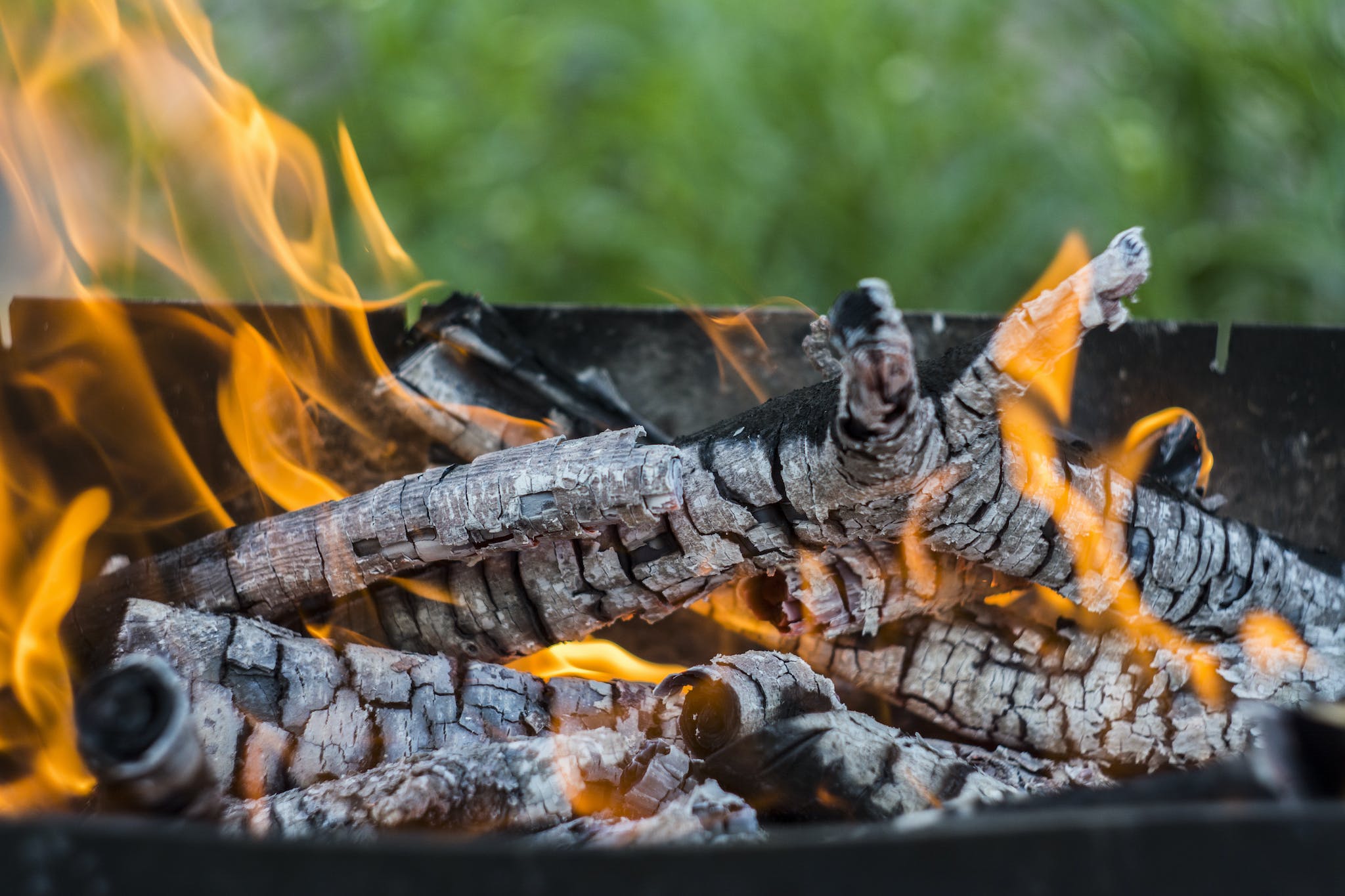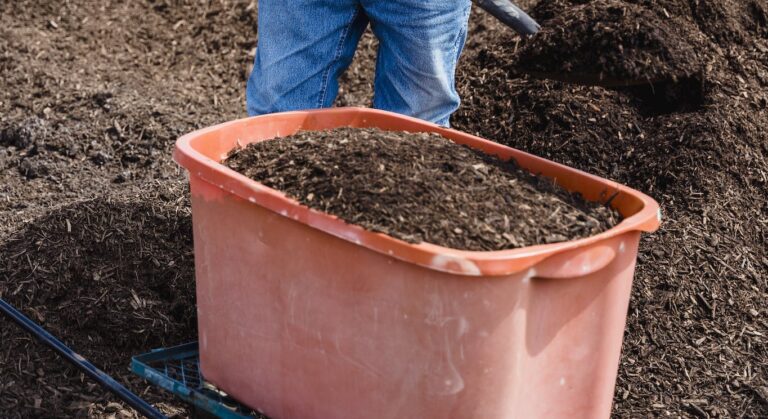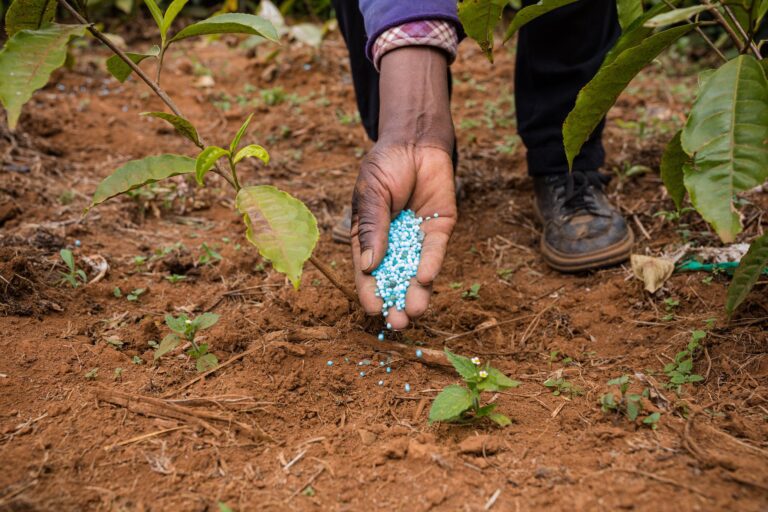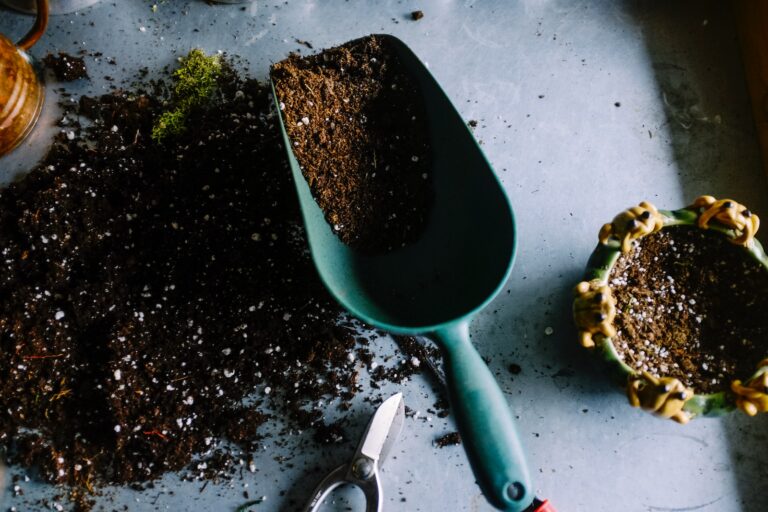Soil is like a canvas, ready to be painted with vibrant colors and lush foliage. And just like an artist carefully selects their pigments, I am constantly enriching my garden’s soil.
I have seen many gardeners asking whether they can put fire pit ashes in their gardens . While the potential benefits of using these ashes as a fertilizer are immense, they wonder whether ash will it truly make their gardens thrive, or could it have unforeseen consequences?
Fire pit ashes can be beneficial for your garden in multiple ways. They are rich in essential nutrients such as potassium, calcium, and phosphorus, which promote plant growth and health. Additionally, their alkaline nature helps to neutralize acidic soils, making them more suitable for a variety of plants. Moreover, fire pit ashes can act as a natural pest deterrent, repelling common garden pests like slugs and snails. However, it’s essential to use them in moderation and follow proper storage and application methods to avoid adverse effects on soil pH and plant growth.
In this article, We take a deep dive into using firepit ashes in gardens.
The Benefits of Using Fire Pit Ashes in Your Garden
Using fire pit ashes in the garden has numerous benefits, making it a practical and effective way to enhance the health and vitality of plants.
One of the main benefits of using fire pit ashes in my garden is their ability to enrich the soil with essential nutrients. Ashes are a rich source of potassium, phosphorus, and calcium, which are vital for plant growth and development. By incorporating ashes into my soil, my plants benefit from these essential nutrients, resulting in healthier and more robust growth.
Another advantage of using fire pit ashes is their ability to help regulate soil pH levels. Ashes are alkaline in nature, which can help neutralize acidic soils. This is particularly beneficial for plants that prefer a more alkaline environment, as it creates a more balanced pH level in the soil.
Furthermore, fire pit ashes can act as a natural pest deterrent. The alkaline properties of the ashes can repel pests such as slugs and snails, reducing the likelihood of damage to plants.
Understanding the Composition of Fire Pit Ashes
When it comes to understanding the composition of fire pit ashes, there are two main points to consider.
First, the nutrient content of ash can vary depending on the type of wood burned, with hardwoods generally producing ashes with higher levels of nutrients.
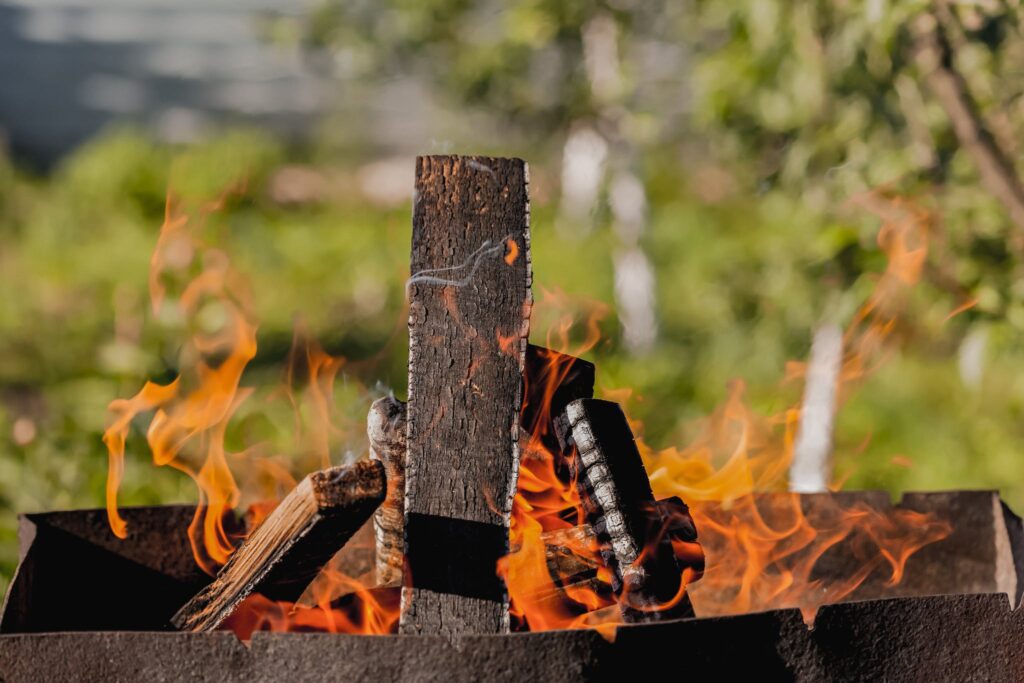
Secondly, the effects of fire pit ashes on soil pH can be significant, as they tend to be alkaline and can raise the pH of acidic soils.
Ash Nutrient Content
Fire pit ash can be a source of various nutrients and minerals, but the exact composition can vary depending on what was burned and the conditions of combustion. Generally, the nutrient content of wood ash includes:
- Potassium (K): Wood ash is particularly rich in potassium, which is an essential nutrient for plant growth. Potassium helps with overall plant health, disease resistance, and the development of flowers and fruits.
- Calcium (Ca): Calcium is another significant component of wood ash. It helps to regulate pH levels in the soil and is vital for cell wall structure in plants.
- Phosphorus (P): While wood ash contains phosphorus, the amount can be variable. Phosphorus is essential for root development, flower, and fruit production, and overall plant energy transfer.
- Magnesium (Mg): Wood ash also contains magnesium, which is a component of chlorophyll and essential for photosynthesis.
- Trace Elements: Wood ash may contain trace amounts of other elements like manganese, zinc, copper, and boron, which are all essential for plant growth but are needed in smaller quantities.
It’s important to note that the nutrient content of wood ash can vary based on factors such as:
- The type of wood burned.
- The completeness of combustion.
- Contamination with other materials.
- The amount of ash and its dilution in the soil.
Effects on Soil Ph
The composition of fire pit ashes plays a crucial role in determining their effects on soil pH. Fire pit ashes are primarily composed of minerals such as calcium, potassium, and magnesium, which can have both positive and negative impacts on soil acidity.
When ashes contain high levels of calcium and potassium, they can help neutralize acidic soil and adjust soil pH towards a more neutral level, which is beneficial for plant growth.
However, excessive amounts of ashes can lead to an increase in soil alkalinity, which may adversely affect plant growth. It is important to use ashes in moderation and conduct soil tests to ensure the optimal pH level for plants.
Here is a table summarizing the effects of fire pit ashes on soil pH and plant growth:
| Composition of Fire Pit Ashes | Effects on Soil pH | Impact on Plant Growth |
|---|---|---|
| High calcium and potassium | Adjusts soil acidity towards neutrality | Beneficial |
| Excessive amounts | Increases soil alkalinity | Adverse |
| Low mineral content | Minimal impact | Negligible |
How to Safely Collect and Store Fire Pit Ashes
To safely collect and store fire pit ashes, proper safety precautions must be taken to prevent accidental fires or injury. Here are three important steps to follow:
- Allow the ashes to cool completely: Before attempting to collect the ashes, make sure they’ve cooled down entirely. This process may take several hours or even a day, depending on the size of the fire and the amount of ash produced. Use a metal shovel or tongs to handle the ashes, as they can remain hot for a long time.
- Use a metal container with a tight-fitting lid: It’s crucial to store the ashes in a metal container that’s specifically designed for this purpose. Avoid using plastic or combustible materials, as they can melt or catch fire. The container should have a secure lid to prevent any accidental spills or the dispersal of ashes by wind.
- Store the container away from flammable materials: Find a safe location to store the container, away from any flammable materials such as firewood, leaves, or chemicals. It’s recommended to keep it in a cool, dry place, preferably outdoors. Ensure that the container is placed on a non-combustible surface to avoid any potential fire hazards.
The Effects of Fire Pit Ashes on Soil Ph Levels
After safely collecting and storing fire pit ashes, it’s important to consider the effects they can have on soil pH levels. Fire pit ashes are known to be alkaline, meaning they’ve a high pH level. When these ashes are added to the soil, they can increase the pH, making it more alkaline. This can have both positive and negative effects on plant growth.
On one hand, some plants prefer slightly acidic soil, so an increase in pH may not be beneficial for them. However, other plants, such as vegetables like tomatoes and cucumbers, thrive in slightly alkaline soil. For such plants, the alkaline nature of fire pit ashes can actually be beneficial.
In addition to affecting pH levels, fire pit ashes also play a role in nutrient cycling. Ashes contain important nutrients like potassium, phosphorus, and calcium, which can enrich the soil and promote plant growth. However, it’s important to note that excessive amounts of ashes can harm plants and inhibit nutrient absorption.
To ensure the positive effects of fire pit ashes on plant growth, it’s recommended to conduct a soil test before adding them to the garden. This will help determine the current pH level and nutrient composition of the soil, allowing for more precise application of the ashes. It’s also advisable to mix the ashes with compost or organic matter to balance the pH and improve nutrient availability.
| Aspect | Effect on Soil pH Levels | Impact on Plant Growth | Recommendations |
|---|---|---|---|
| Alkalinity of Ashes | Increases soil pH (more alkaline) | Positive for alkaline-loving plants (e.g., tomatoes, cucumbers) but may be detrimental to plants preferring acidic soil | Conduct a soil test before application; consider the plant’s pH preferences |
| Nutrient Content | Enriches soil with potassium, phosphorus, and calcium | Promotes plant growth and nutrient availability | Mix ashes with compost or organic matter; avoid excessive application |
| Potential Harm | Excessive amounts can harm plants and inhibit nutrient absorption | Negative impact on plant health and growth | Use ashes in moderation; follow recommended application rates |
Using Fire Pit Ashes as a Fertilizer for Your Plants
To apply the ashes, I simply sprinkle them around the base of my plants and lightly work them into the soil.
To effectively use fire pit ashes as a fertilizer for your plants, it is important to follow proper application methods.
While fire pit ashes can provide valuable nutrients for your garden, it’s crucial to use them correctly to avoid potential risks. First, ensure proper storage methods for the ashes, as they can retain heat for several days. Allow the ashes to cool completely before using them as fertilizer.
When applying the ashes, spread them evenly across the soil, avoiding concentrated piles. Incorporate the ashes into the soil using a garden fork or rake. Be cautious not to overapply, as excessive amounts can alter the pH of the soil.
| Proper Storage Methods | Potential Risks |
|---|---|
| Allow ashes to cool completely before storage | Ashes can retain heat and cause fires if not properly cooled |
| Store ashes in a metal container with a tight-fitting lid | Ashes can be blown by wind, causing damage or injury |
| Keep the container in a dry, well-ventilated area | Ashes can contain harmful chemicals or contaminants |
The timing of applying fire pit ashes can influence its effectiveness in gardens. For instance, applying ashes in the fall can help prepare the soil for the following growing season, while spring applications can support early plant growth. Understanding the seasonal considerations can optimize the benefits of using fire pit ashes in gardening.
Precautions to Take When Using Fire Pit Ashes in Your Garden
Taking proper precautions when using fire pit ashes in your garden is essential for ensuring the health and vitality of your plants. Here are three important precautions to keep in mind:
- Cool the ashes completely: Before using fire pit ashes in your garden, it’s crucial to let them cool down completely. Hot ashes can cause damage to your plants and soil, so make sure to wait at least 24 hours after extinguishing the fire before handling the ashes.
- Avoid using ashes from treated wood or charcoal: Ashes from treated wood or charcoal can contain harmful chemicals that can harm your plants. It’s best to only use ashes from natural wood fires, such as hardwood or fruitwood, as these are safer for your garden.
- Use ashes sparingly: While fire pit ashes can provide some benefits to your garden, it’s important not to overdo it. Excessive use of ashes can raise the soil pH levels, which can harm certain plants. It’s recommended to apply ashes sparingly, only a thin layer, and mix them well with the soil to prevent any potential negative effects.
| Precaution | Description |
|---|---|
| Cool the ashes completely | Let ashes cool down entirely before use to prevent damage to plants and soil. |
| Avoid using treated wood or charcoal ashes | Use ashes only from natural wood fires to avoid harmful chemicals. |
| Use ashes sparingly | Apply ashes in moderation to prevent soil pH imbalance and potential harm to plants. |
Other Creative Uses for Fire Pit Ashes in Gardening
One of the ways I found to utilize fire pit ashes is by using them for composting. Fire pit ashes are rich in nutrients like potassium, phosphorus, and calcium, which can benefit the soil when added to compost. I simply mix the ashes with other organic materials such as kitchen scraps, leaves, and grass clippings to create a nutrient-rich compost that can be used to improve the health of my plants.
Another way I incorporate fire pit ashes into my gardening routine is by using them in homemade potting soil. I mix the ashes with equal parts of peat moss and perlite to create a well-draining soil mixture. The ashes help to improve the pH levels of the soil, making it more alkaline, which is beneficial for certain plants like roses and lilacs.
Beyond gardening, fire pit ashes have various alternative uses. They can be used as a traction aid on icy surfaces, as an ingredient in homemade soap or detergent, or even as a cleaning agent for polishing silverware. Exploring these alternative uses can provide additional value and reduce waste.
Should You Put Fire Pit Ashes in Your Garden?
In my experience, incorporating fire pit ashes into my garden has proven to be a beneficial practice. Here are the benefits and drawbacks to consider before deciding if it’s right for your garden:
- Nutrient Boost: Fire pit ashes are rich in essential minerals like potassium, calcium, and phosphorus. When mixed into the soil, they can improve its fertility and promote healthy plant growth.
- pH Adjustment: If your soil is too acidic, fire pit ashes can help raise its pH level and make it more alkaline. This is especially beneficial for plants that prefer slightly alkaline conditions, such as vegetables like tomatoes and broccoli.
- Pest Control: Fire pit ashes can act as a natural deterrent against pests like slugs and snails. When sprinkled around the base of plants, they create a barrier that these pests find difficult to cross.
However, there are some drawbacks to consider as well:
- Excessive Use: While fire pit ashes can be beneficial, using too much can raise the pH level of your soil too high, making it unsuitable for certain plants. It’s important to test your soil’s pH and adjust accordingly.
- Contaminants: Fire pit ashes may contain traces of chemicals and toxins, especially if you’ve burned treated wood or other materials. It’s crucial to only use ashes from clean burning materials, like untreated firewood or natural plant debris.
If you’re unsure about incorporating fire pit ashes into your garden, there are alternative options to consider. Composting them or using them as a top-dressing mulch are both effective ways to reap the benefits without directly mixing them into the soil.
Ultimately, it’s important to assess your garden’s specific needs and make an informed decision based on what’ll work best for your plants.
